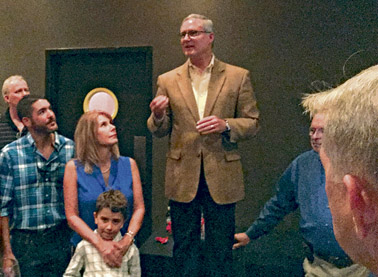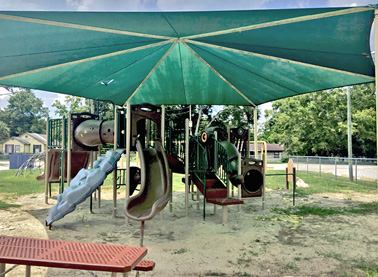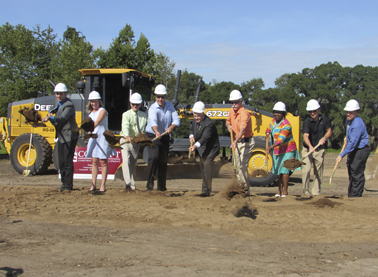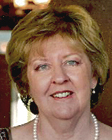Local Incumbents Sweep Primary Elections Tuesday

Photo special to Alachua County Today
State House District 21 candidate Chuck Clemons celebrates his Republican primary win Tuesday evening.
ALACHUA COUNTY – Incumbents ran the table in three highly-contested political races during Tuesday’s 2016 Primary Election.
The Democratic candidacies for two Alachua County Commissioners and the Alachua County Sheriff were at stake for the Nov. 8 General Election.
Incumbent County Commissioner Mike Byerly narrowly defeated challenger Kevin Thorpe for Commission District 1 by roughly 52 to 48 percent, or a difference of 1,250 votes. Byerly won primarily by the strength of his showing within the City of Gainesville, as Thorpe carried the vote in the rest of the County. Byerly will face write-in candidate Craig Herda in the General Election.
In the Democratic Primary for County Commission District 3, incumbent Robert “Hutch” Hutchison secured a solid victory over challenger Larry McDaniel by approximately 63 to 37 percent of the vote and will next face write-in candidate Susan Bliss.
Alachua County Sheriff Sadie Darnell resoundingly won the Democratic nomination over former Alachua County Detective Zac Zedalis 72 to 28 percent and will face Republican and former Alachua County Lieutenant Jack Jacobs in November.
In a three-way race for the Republican nomination for State Representative of District 21, Chuck Clemons held off Wenda Lewis 44 to 36 percent while Tim Rogers secured 20 percent of the vote. Clemons will run against Democrat Marihelen Wheeler, who was unopposed during the Primary.
Other local contests saw incumbent State Representative Elizabeth Porter secure the Republican nomination for District 10 over Carol Daugherty. Porter will face Jerry Bullard, who soundly defeated Rick Schutte in the Democratic race.
Incumbent Alachua County School Board member Eileen Roy defeated Juliun Kinsey in a non-partisan race for the District 2 seat, while Kim Barton won the race for Alachua County Supervisor of Elections over William Boyett and Jeremy Clements.
Voter turnout was nearly 25 percent, as 41,357 ballots were cast out of 165,596 eligible voters according to the Alachua County Supervisor of Elections web site.
# # #
Email Dwisener@
alachuatoday.com
Add a comment



